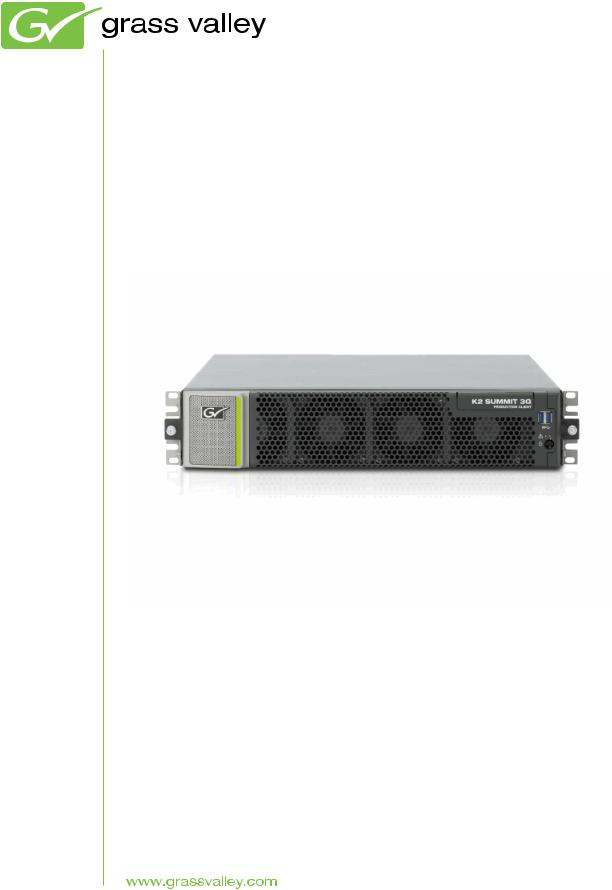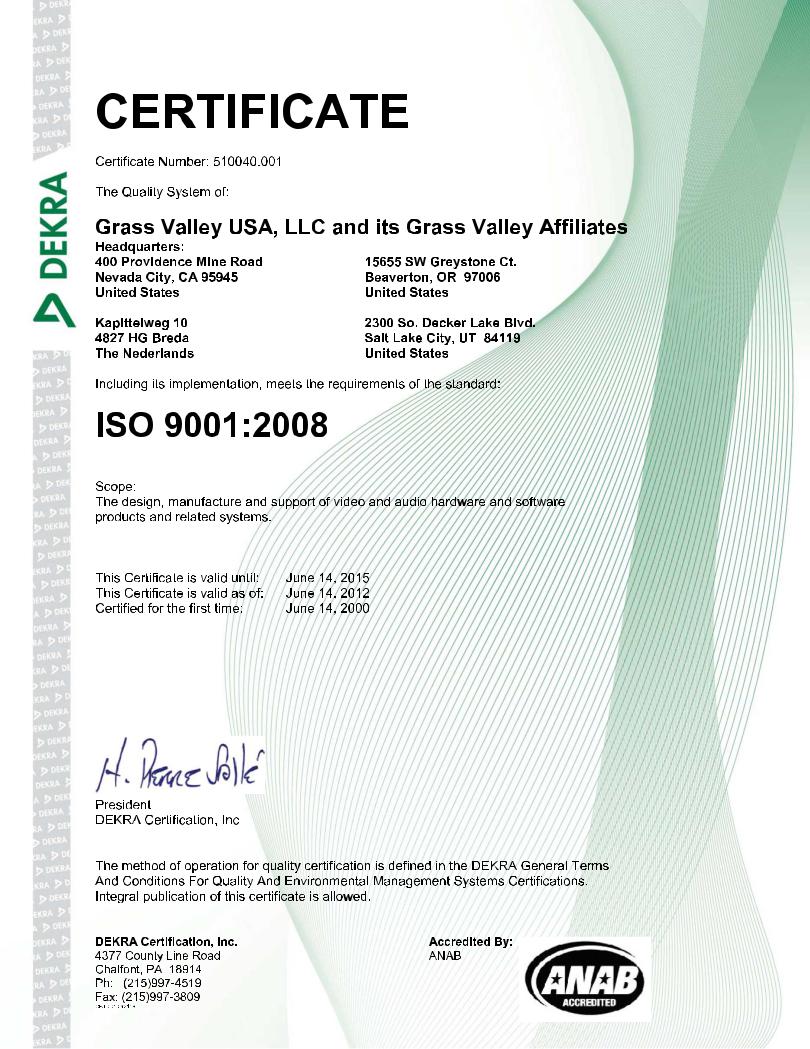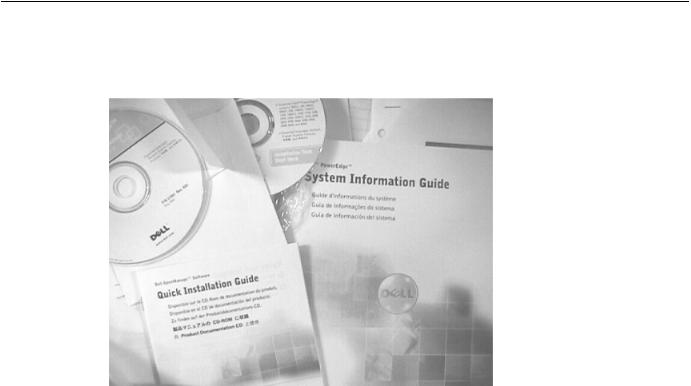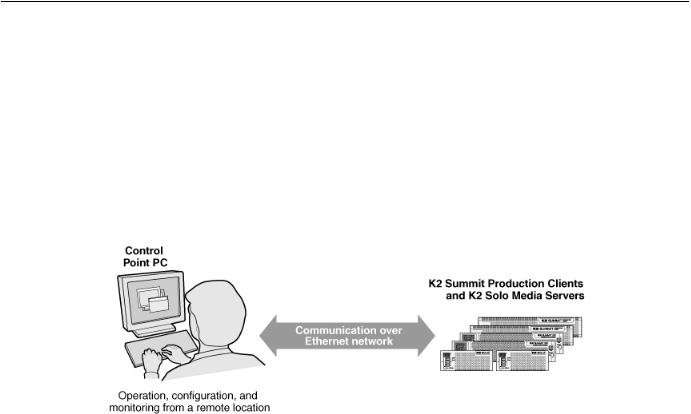Grass Valley K2 System User Manual

K2
Media Platform
System Guide
Software version 9
071-8726-04 November 2012


K2
Media Platform
System Guide
Software version 9
071-8726-04 November 2012

Contents |
|
Safety Summaries...................................................................................................................................... |
11 |
Preface....................................................................................................................................................... |
23 |
Chapter 1: Product description................................................................................................ |
29 |
About K2 systems................................................................................................................................... |
30 |
K2 Summit 3G system features.............................................................................................................. |
30 |
K2 Summit system features.................................................................................................................... |
31 |
K2 Solo 3G system features................................................................................................................... |
32 |
K2 Solo system features......................................................................................................................... |
33 |
K2 Summit/Solo formats, models, licenses, and hardware support........................................................ |
33 |
Features of internal storage models....................................................................................................... |
35 |
Features of external storage models...................................................................................................... |
36 |
Product identification K2 Summit 3G...................................................................................................... |
36 |
Product identification first generation K2 Summit................................................................................... |
36 |
Product identification K2 Solo................................................................................................................. |
37 |
Front panel indicators K2 Summit 3G system......................................................................................... |
37 |
Front panel indicators first-generation K2 Summit.................................................................................. |
38 |
Front panel indicators K2 Solo................................................................................................................ |
38 |
Rear panel view...................................................................................................................................... |
39 |
K2 Summit 3G models rear panel....................................................................................................... |
39 |
K2 Summit first generation models rear panel.................................................................................... |
40 |
K2 Solo 3G Media Server rear panel.................................................................................................. |
41 |
K2 Solo Media Server rear panel........................................................................................................ |
42 |
ChannelFlex rear panel connections................................................................................................... |
42 |
Considerations for first startup out of box............................................................................................... |
43 |
K2 Summit/Solo system overview........................................................................................................... |
43 |
Application System.............................................................................................................................. |
44 |
Real Time System............................................................................................................................... |
44 |
Media control and processing............................................................................................................. |
44 |
Loop through, E to E, and feeds......................................................................................................... |
45 |
Ports used by K2 services...................................................................................................................... |
46 |
RAID drive numbering K2 Summit 3G system........................................................................................ |
47 |
RAID drive numbering first generation K2 Summit system..................................................................... |
48 |
RAID drive numbering K2 Solo system.................................................................................................. |
49 |
Chapter 2: Overview of K2 System Tools................................................................................ |
51 |
Configuration Manager........................................................................................................................... |
52 |
Accessing Configuration Manager...................................................................................................... |
53 |
Saving and restoring Configuration Manager settings........................................................................ |
53 |
Restoring default Configuration Manager settings ............................................................................. |
54 |
K2Config................................................................................................................................................. |
54 |
Opening the K2Config application....................................................................................................... |
55 |
Storage Utility for standalone K2 Summit/Solo system........................................................................... |
56 |
Remote Desktop Connection.................................................................................................................. |
57 |
Accessing Remote Desktop Connection............................................................................................. |
57 |
About SiteConfig..................................................................................................................................... |
57 |
Opening SiteConfig............................................................................................................................. |
58 |
SiteConfig main window...................................................................................................................... |
58 |
06 November 2012 |
K2 System Guide 5 |

Contents
Chapter 3: System connections and configuration............................................................... |
61 |
About networks....................................................................................................................................... |
62 |
Control network description................................................................................................................. |
62 |
Streaming/FTP network description.................................................................................................... |
62 |
Media (iSCSI) network description...................................................................................................... |
62 |
Network considerations and constraints............................................................................................. |
62 |
Network connections.............................................................................................................................. |
62 |
Ethernet cable requirements............................................................................................................... |
63 |
About network ports............................................................................................................................ |
63 |
Making network connections............................................................................................................... |
63 |
Network configuration............................................................................................................................. |
65 |
About network functionality................................................................................................................. |
65 |
About modifying or restoring network settings.................................................................................... |
66 |
Configure network settings for a stand-alone K2 systems.................................................................. |
66 |
Streaming video between K2 systems................................................................................................ |
67 |
Configuring Server 2008 for domain....................................................................................................... |
71 |
Using FTP for file transfer....................................................................................................................... |
73 |
About the K2 FTP interface................................................................................................................. |
73 |
Limitations with complex media types................................................................................................. |
74 |
Transferring between different types of systems................................................................................. |
75 |
Transfer mechanisms.......................................................................................................................... |
75 |
FTP access and configuration............................................................................................................. |
76 |
FTP access by automation.................................................................................................................. |
76 |
FTP and media access security.......................................................................................................... |
76 |
About FTP internationalization............................................................................................................ |
77 |
Setting the FTP language................................................................................................................... |
78 |
FTP access by Internet Explorer......................................................................................................... |
78 |
FTP commands supported.................................................................................................................. |
80 |
Using FTP on a K2 Nearline SAN....................................................................................................... |
81 |
Using reference files............................................................................................................................... |
82 |
About QuickTime reference files......................................................................................................... |
82 |
About MXF reference files................................................................................................................... |
82 |
Configuring reference file type on a standalone K2 Summit/Solo system.......................................... |
83 |
Configuring reference file type on a K2 SAN system.......................................................................... |
83 |
Quicktime and Final Cut Pro support...................................................................................................... |
84 |
About connecting to K2 storage with Final Cut Pro............................................................................. |
84 |
Install and configure Macintosh Final Cut Pro systems on K2 storage............................................... |
85 |
Using Final Cut Pro on a K2 storage................................................................................................... |
95 |
Connecting RS-422 K2 Summit/Solo 3G system................................................................................... |
96 |
Connecting RS-422 first generation Summit.......................................................................................... |
97 |
Connecting GPI...................................................................................................................................... |
97 |
Chapter 4: Import/export services........................................................................................... |
99 |
Using the HotBin capture service......................................................................................................... |
100 |
About the HotBin capture service..................................................................................................... |
100 |
Prerequisites for using the HotBin capture service........................................................................... |
101 |
Considerations for using the HotBin capture service........................................................................ |
101 |
Configuring the HotBin Capture Service........................................................................................... |
103 |
HotBin capture service components................................................................................................. |
104 |
Using the XML Import capture service................................................................................................. |
105 |
About the XML Import capture service.............................................................................................. |
105 |
Prerequisites for using the XML Import capture service................................................................... |
105 |
Considerations for using the XML import capture service................................................................. |
106 |
Configuring the XML Import Capture Service................................................................................... |
106 |
Testing the XML Import Capture Service.......................................................................................... |
108 |
6 K2 System Guide |
06 November 2012 |

|
Contents |
XML Import capture service components......................................................................................... |
108 |
Using the P2 capture service................................................................................................................ |
108 |
About the P2 capture service............................................................................................................ |
109 |
Prerequisites for using the P2 capture service.................................................................................. |
109 |
Considerations for using the P2 capture service............................................................................... |
110 |
Configuring the P2 Capture Service................................................................................................. |
110 |
Testing the P2 Capture Service......................................................................................................... |
112 |
P2 capture service components........................................................................................................ |
112 |
Using the Export capture service.......................................................................................................... |
112 |
About the Export capture service...................................................................................................... |
112 |
Prerequisites for using the Export capture service........................................................................... |
113 |
Considerations and requirements for using the Export capture service............................................ |
113 |
Configuring the Export Capture Service........................................................................................... |
114 |
Testing the Export Capture Service.................................................................................................. |
115 |
Export capture service components.................................................................................................. |
116 |
Licensing K2 capture service software................................................................................................. |
116 |
PitchBlue workflow considerations....................................................................................................... |
116 |
Pinnacle support................................................................................................................................... |
117 |
Pinnacle material that can be converted........................................................................................... |
117 |
Pinnacle import mechanisms............................................................................................................ |
117 |
Enabling Pinnacle import.................................................................................................................. |
118 |
Importing via K2 Hot Bin................................................................................................................... |
118 |
Importing via K2 FTP........................................................................................................................ |
119 |
Importing via Pinnacle emulation K2 FTP......................................................................................... |
119 |
Specifications for Pinnacle support................................................................................................... |
120 |
Compressed VBI import........................................................................................................................ |
121 |
About compressed VBI import processes......................................................................................... |
122 |
Compressed VBI import specifications............................................................................................. |
122 |
Chapter 5: Managing Stand-alone Storage........................................................................... |
123 |
About the internal storage system........................................................................................................ |
124 |
K2 Summit 3G internal storage system............................................................................................. |
124 |
First generation K2 Summit internal storage system........................................................................ |
124 |
K2 Solo Media Server internal storage system................................................................................. |
125 |
About the direct-connect storage system............................................................................................. |
125 |
Using Storage Utility............................................................................................................................. |
126 |
About Storage Utility......................................................................................................................... |
126 |
Opening Storage Utility..................................................................................................................... |
126 |
Overview of Storage Utility................................................................................................................ |
129 |
Checking storage subsystem status.................................................................................................. |
130 |
Checking controller microcode.......................................................................................................... |
130 |
About identifying disks...................................................................................................................... |
130 |
Identifying internal disks.................................................................................................................... |
130 |
Get controller logs............................................................................................................................. |
131 |
Check disk mode pages.................................................................................................................... |
132 |
Disabling a disk................................................................................................................................. |
132 |
Forcing a disk to rebuild.................................................................................................................... |
132 |
Unbind LUN....................................................................................................................................... |
132 |
Bind Luns.......................................................................................................................................... |
133 |
Changing RAID type for internal storage.......................................................................................... |
135 |
Making a new media file system on a K2 Summit/Solo.................................................................... |
136 |
Checking the media file system........................................................................................................ |
137 |
Cleaning unreferenced files and movies........................................................................................... |
137 |
Downloading controller microcode.................................................................................................... |
138 |
Downloading disk drive firmware...................................................................................................... |
139 |
Placing the K2 system into online mode........................................................................................... |
139 |
06 November 2012 |
K2 System Guide 7 |

Contents
Chapter 6: Managing stand-alone K2 systems with SiteConfig......................................... |
141 |
About managing stand-alone K2 clients with SiteConfig...................................................................... |
142 |
SiteConfig and stand-alone K2 clients checklist................................................................................... |
142 |
System requirements for SiteConfig host PC....................................................................................... |
143 |
About installing SiteConfig.................................................................................................................... |
144 |
Installing/upgrading SiteConfig............................................................................................................. |
144 |
Creating a system description for stand-alone K2 clients..................................................................... |
146 |
Creating the control network for stand-alone K2 clients ...................................................................... |
147 |
Creating the FTP/streaming network for stand-alone K2 clients (optional)........................................... |
149 |
Adding a group..................................................................................................................................... |
150 |
Adding stand-alone K2 clients to the system description..................................................................... |
151 |
Modifying stand-alone K2 client unassigned (unmanaged) interfaces.................................................. |
151 |
Discovering devices with SiteConfig..................................................................................................... |
153 |
Assigning discovered devices............................................................................................................... |
154 |
Modifying stand-alone K2 client managed network interfaces.............................................................. |
155 |
Adding a control point PC placeholder device to the system description............................................. |
161 |
Assigning the control point PC.............................................................................................................. |
162 |
Making the host name the same as the device name........................................................................... |
162 |
Pinging devices from the PC that hosts SiteConfig.............................................................................. |
163 |
About hosts files and SiteConfig........................................................................................................... |
163 |
Generating host tables using SiteConfig............................................................................................... |
164 |
Configuring deployment groups............................................................................................................ |
165 |
About deploying software for stand-alone K2 clients............................................................................ |
166 |
Chapter 7: Managing K2 system software............................................................................ |
167 |
About K2 system software.................................................................................................................... |
168 |
Software components installed......................................................................................................... |
168 |
Installing Control Point software........................................................................................................... |
169 |
Installing K2 software............................................................................................................................ |
170 |
Pre-installed software........................................................................................................................... |
170 |
Backup and recovery strategies............................................................................................................ |
170 |
Chapter 8: Administering and maintaining the K2 system................................................. |
173 |
Licensing............................................................................................................................................... |
174 |
Software version licenses.................................................................................................................. |
174 |
Licensable options............................................................................................................................ |
174 |
Configuring K2 security........................................................................................................................ |
174 |
Overview of K2 security features....................................................................................................... |
174 |
Example: Setting up user access to bins ......................................................................................... |
175 |
Example: Setting up user access to channels .................................................................................. |
176 |
Passwords and security on Grass Valley systems............................................................................ |
177 |
Configuring media access security for K2 bins................................................................................. |
177 |
AppCenter operations and media access security ........................................................................... |
179 |
FTP and media access security ....................................................................................................... |
179 |
K2 SANs and media access security ............................................................................................... |
179 |
Protocol control of channels and media access security ................................................................. |
180 |
About channel access security.......................................................................................................... |
180 |
K2 and STRATUS security considerations........................................................................................... |
182 |
Understanding virus and security policies............................................................................................ |
183 |
Windows operating system update policy......................................................................................... |
183 |
Embedded Security modes and policies........................................................................................... |
183 |
Grass Valley anti-virus scan policy.................................................................................................... |
184 |
Network and firewall policies............................................................................................................. |
185 |
About tri-level sync................................................................................................................................ |
185 |
8 K2 System Guide |
06 November 2012 |

|
Contents |
Auto log on............................................................................................................................................ |
186 |
Regional and language settings .......................................................................................................... |
186 |
Checking RAM...................................................................................................................................... |
186 |
Chapter 9: Direct Connect Storage....................................................................................... |
187 |
About the direct-connect Fibre Channel card....................................................................................... |
188 |
Setting up direct-connect K2 G10v2 RAID storage.............................................................................. |
188 |
Setting up direct-connect K2 G10 RAID storage.................................................................................. |
190 |
Uninstalling Multi-Path I/O Software on a direct-connect K2 system.................................................... |
193 |
Installing Multi-Path I/O Software on a direct-connect K2 system........................................................ |
194 |
Powering on K2 G10v2 RAID............................................................................................................... |
195 |
Powering on K2 G10 RAID................................................................................................................... |
196 |
Chapter 10: K2 Summit Transmission models..................................................................... |
197 |
K2 Summit Transmission models features............................................................................................ |
198 |
K2 Summit Transmission models channel configurations..................................................................... |
199 |
K2 Summit Transmission models requirements and restrictions.......................................................... |
200 |
Storage Utility procedures for K2 Summit Transmission Server models............................................... |
200 |
Chapter 11: Proxy/live streaming.......................................................................................... |
201 |
Proxy and live streaming workflow overview......................................................................................... |
202 |
About proxy/live streaming.................................................................................................................... |
202 |
Proxy/live streaming formats................................................................................................................. |
203 |
Configuring proxy and live streaming settings...................................................................................... |
204 |
Enable proxy files.............................................................................................................................. |
204 |
Enable live streaming........................................................................................................................ |
204 |
Configure live streaming multicast.................................................................................................... |
205 |
Configure live streaming multicast using K2Config........................................................................... |
205 |
Test proxy media generation................................................................................................................. |
206 |
Proxy/live streaming technical details................................................................................................... |
207 |
Appendix A: Remote control protocols................................................................................ |
209 |
About remote control protocols............................................................................................................. |
210 |
Using AMP protocol to control K2 systems........................................................................................... |
210 |
AMP Two-Head Player Model............................................................................................................ |
210 |
Controlling transfers with AMP.......................................................................................................... |
210 |
AMP channel designations ............................................................................................................... |
211 |
AMP internationalization .................................................................................................................. |
211 |
Using VDCP protocol to control K2 systems ........................................................................................ |
211 |
VDCP two-head player model........................................................................................................... |
211 |
Controlling transfers with VDCP........................................................................................................ |
212 |
VDCP internationalization................................................................................................................. |
212 |
PitchBlue workflow considerations.................................................................................................... |
212 |
Using BVW protocol to control K2 systems.......................................................................................... |
213 |
Special considerations for automation vendors.................................................................................... |
213 |
Harris settings .................................................................................................................................. |
213 |
RS-422 protocol control connections ................................................................................................... |
213 |
Security and protocol control ............................................................................................................... |
214 |
Appendix B: Specifications.................................................................................................... |
215 |
K2 Summit transmission models specifications.................................................................................... |
216 |
AC power specification......................................................................................................................... |
216 |
Environmental specifications ............................................................................................................... |
217 |
Mechanical specifications .................................................................................................................... |
218 |
06 November 2012 |
K2 System Guide 9 |

Contents
Electrical specifications ........................................................................................................................ |
219 |
Serial Digital Video (SDI) .................................................................................................................. |
219 |
Genlock Reference............................................................................................................................ |
220 |
System Timing................................................................................................................................... |
220 |
AES/EBU Digital Audio...................................................................................................................... |
221 |
LTC Input/Output .............................................................................................................................. |
222 |
VITC Input/Output ............................................................................................................................ |
222 |
RS-422 specification K2 Summit 3G system.................................................................................... |
223 |
RS-422 specification first generation K2 Summit/Solo system......................................................... |
223 |
GPI I/O specifications........................................................................................................................ |
223 |
Operational specifications .................................................................................................................... |
224 |
Video codec description K2 Summit/Solo ........................................................................................ |
224 |
Playout of multiple formats................................................................................................................ |
227 |
Active Format Description (AFD) specifications................................................................................ |
230 |
VBI/Ancillary/data track specifications ............................................................................................. |
235 |
Internationalization............................................................................................................................ |
240 |
Limitations for creating and naming assets and bins........................................................................ |
241 |
Video network performance.............................................................................................................. |
243 |
About file interchange mechanisms on K2 systems.......................................................................... |
243 |
Media file system performance on K2 systems................................................................................. |
251 |
Transition effects formats and limitations.......................................................................................... |
252 |
Protocols supported.......................................................................................................................... |
253 |
Transfer compatibility with K2 Summit/Solo...................................................................................... |
253 |
Control Point PC system requirements............................................................................................. |
255 |
MIB specifications................................................................................................................................. |
256 |
K2 client MIBs .................................................................................................................................. |
257 |
K2 Media Server MIBs...................................................................................................................... |
258 |
K2 Appliance (Generic Windows computer based) MIBs.................................................................. |
259 |
Appendix C: Connector pinouts............................................................................................ |
261 |
K2 Summit/Solo system connector pinouts.......................................................................................... |
262 |
AES Audio......................................................................................................................................... |
262 |
RS-422 connector pinouts K2 Summit 3G........................................................................................ |
263 |
RS-422 connector pinouts first generation K2 Summit/Solo system................................................. |
263 |
LTC connectors pinouts..................................................................................................................... |
264 |
GPI I/O connector pinouts................................................................................................................. |
265 |
K2 Media Server connector pinouts...................................................................................................... |
266 |
Redundant server heartbeat serial cable.......................................................................................... |
266 |
Appendix D: Rack mounting.................................................................................................. |
267 |
Rack-mount considerations.................................................................................................................. |
268 |
Rack mount hardware shipped with the K2 system.............................................................................. |
268 |
Mounting the Rack Slides..................................................................................................................... |
269 |
Installing the K2 system on the rack mount rails................................................................................... |
270 |
Making Rack Slide Adjustments........................................................................................................... |
270 |
Appendix E: Trademarks and Agreements........................................................................... |
271 |
10 K2 System Guide |
06 November 2012 |

Safety Summaries
Safety Summary
Read and follow the important safety information below, noting especially those instructions related to risk of fire, electric shock or injury to persons. Additional specific warnings not listed here may be found throughout the manual.
WARNING: Any instructions in this manual that require opening the equipment cover orenclosureareforusebyqualifiedservicepersonnelonly. Toreducetheriskofelectric shock,donotperformanyservicingotherthanthatcontainedintheoperatinginstructions unless you are qualified to do so.
Safety terms and symbols
Terms in this manual
Safety-related statements may appear in this manual in the following form:
WARNING: Warning statements identify conditions or practices that may result in personal injury or loss of life.
CAUTION:Cautionstatementsidentifyconditionsorpracticesthatmayresultindamage to equipment or other property, or which may cause equipment crucial to your business environment to become temporarily non-operational.
Terms on the product
These terms may appear on the product:
DANGER — A personal injury hazard is immediately accessible as you read the marking.
WARNING — A personal injury hazard exists but is not immediately accessible as you read the marking.
CAUTION — A hazard to property, product, and other equipment is present.
Symbols on the product
The following symbols may appear on the product:
Indicates that dangerous high voltage is present within the equipment enclosure that may be of sufficient magnitude to constitute a risk of electric shock.
Indicates that user, operator or service technician should refer to product manual(s) for important operating, maintenance, or service instructions.
This is a prompt to note fuse rating when replacing fuse(s). The fuse referenced in the text must be replaced with one having the ratings indicated.
06 November 2012 |
K2 System Guide 11 |

Safety Summaries
Identifies a protective grounding terminal which must be connected to earth ground prior to making any other equipment connections.
Identifies an external protective grounding terminal which may be connected to earth ground as a supplement to an internal grounding terminal.
Indicates that static sensitive components are present which may be damaged by electrostatic discharge. Use anti-static procedures, equipment and surfaces during servicing.
Warnings
The following warning statements identify conditions or practices that can result in personal injury or loss of life.
Dangerous voltage or current may be present — Disconnect power and remove battery (if applicable) before removing protective panels, soldering, or replacing components.
Do not service alone — Do not internally service this product unless another person capable of rendering first aid and resuscitation is present.
Remove jewelry — Prior to servicing, remove jewelry such as rings, watches, and other metallic objects.
Avoid exposed circuitry — Do not touch exposed connections, components or circuitry when power is present.
Use proper power cord
Ground product
Operate only with covers and enclosure panels in place — Do not operate this product when covers or enclosure panels are removed.
Use correct fuse
Use only in dry environment
Use only in non-explosive environment — Do not operate this product in an explosive atmosphere.
High leakage current may be present power.
Dual power supplies may be present — Be certain to plug each power supply cord into a separate branch circuit employing a separate service ground. Disconnect both power supply cords prior to servicing.
Double pole neutral fusing — Disconnect mains power prior to servicing.
Use proper lift points — Do not use door latches to lift or move equipment.
Avoid mechanical hazards — Allow all rotating devices to come to a stop before servicing.
Cautions
The following caution statements identify conditions or practices that can result in damage to equipment or other property
Use correct power source — Do not operate this product from a power source that applies more than the voltage specified for the product.
12 K2 System Guide |
06 November 2012 |

Safety Summaries
Use correct voltage setting — If this product lacks auto-ranging power supplies, before applying power ensure that the each power supply is set to match the power source.
Provide proper ventilation — To prevent product overheating, provide equipment ventilation in accordance with installation instructions.
Use anti-static procedures — Static sensitive components are present which may be damaged by electrostatic discharge. Use anti-static procedures, equipment and surfaces during servicing.
Do not operate with suspected equipment failure — If you suspect product damage or equipment failure, have the equipment inspected by qualified service personnel.
Ensure mains disconnect — If mains switch is not provided, the power cord(s) of this equipment provide the means of disconnection. The socket outlet must be installed near the equipment and must be easily accessible. Verify that all mains power is disconnected before installing or removing power supplies and/or options.
Route cable properly — Route power cords and other cables so that they ar not likely to be damaged. Properly support heavy cable bundles to avoid connector damage.
Use correct power supply cords — Power cords for this equipment, if provided, meet all North American electrical codes. Operation of this equipment at voltages exceeding 130 VAC requires powersupplycordswhichcomplywithNEMAconfigurations. Internationalpowercords,ifprovided, have the approval of the country of use.
Use correct replacement battery — This product may contain batteries. To reduce the risk of explosion, check polarity and replace only with the same or equivalent type recommended by manufacturer. Dispose of used batteries according to the manufacturer’s instructions.
Troubleshoot only to board level — Circuit boards in this product are densely populated with surface mount technology (SMT) components and application specific integrated circuits (ASICS). As a result, circuit board repair at the component level is very difficult in the field, if not impossible. For warranty compliance, do not troubleshoot systems beyond the board level.
Sicherheit – Überblick
Lesen und befolgen Sie die wichtigen Sicherheitsinformationen dieses Abschnitts. Beachten Sie insbesondere die Anweisungen bezüglich
Brand-, Stromschlagund Verletzungsgefahren. Weitere spezifische, hier nicht aufgeführte Warnungen finden Sie im gesamten Handbuch.
WARNUNG: Alle Anweisungen in diesem Handbuch, die das Abnehmen der Geräteabdeckung oder des Gerätegehäuses erfordern, dürfen nur von qualifiziertem Servicepersonal ausgeführt werden. Um die Stromschlaggefahr zu verringern, führen SiekeineWartungsarbeitenaußerdenindenBedienungsanleitungengenanntenArbeiten aus, es sei denn, Sie besitzen die entsprechende Qualifikationen für diese Arbeiten.
Sicherheit – Begriffe und Symbole
In diesem Handbuch verwendete Begriffe
Sicherheitsrelevante Hinweise können in diesem Handbuch in der folgenden Form auftauchen:
06 November 2012 |
K2 System Guide 13 |

Safety Summaries
WARNUNG: Warnungen weisen auf Situationen oder Vorgehensweisen hin, die
Verletzungsoder Lebensgefahr bergen.
VORSICHT: Vorsichtshinweise weisen auf Situationen oder Vorgehensweisen hin, die zuSchädenanAusrüstungskomponentenoderanderenGegenständenoderzumzeitweisen Ausfall wichtiger Komponenten in der Arbeitsumgebung führen können.
Hinweise am Produkt
Die folgenden Hinweise können sich am Produkt befinden:
GEFAHR – Wenn Sie diesen Begriff lesen, besteht ein unmittelbares Verletzungsrisiko.
WARNUNG – Wenn Sie diesen Begriff lesen, besteht ein mittelbares Verletzungsrisiko.
VORSICHT – Es besteht ein Risiko für Objekte in der Umgebung, den Mixer selbst oder andere Ausrüstungskomponenten.
Symbole am Produkt
Die folgenden Symbole können sich am Produkt befinden:
Weist auf eine gefährliche Hochspannung im Gerätegehäuse hin, die stark genug sein kann, um eine Stromschlaggefahr darzustellen.
Weist darauf hin, dass der Benutzer, Bediener oder Servicetechniker wichtige Bedienungs-, Wartungsoder Serviceanweisungen in den Produkthandbüchern lesen sollte.
Dies ist eine Aufforderung, beim Wechsel von Sicherungen auf deren Nennwert zu achten. Die im Text angegebene Sicherung muss durch eine Sicherung ersetzt werden, die die angegebenen Nennwerte besitzt.
Weist auf eine Schutzerdungsklemme hin, die mit dem Erdungskontakt verbunden werden muss, bevor weitere Ausrüstungskomponenten angeschlossen werden.
Weist auf eine externe Schutzerdungsklemme hin, die als Ergänzung zu einem internen
Erdungskontakt an die Erde angeschlossen werden kann.
Weist darauf hin, dass es statisch empfindliche Komponenten gibt, die durch eine elektrostatische Entladung beschädigt werden können. Verwenden Sie antistatische Prozeduren, Ausrüstung und Oberflächen während der Wartung.
Warnungen
Die folgenden Warnungen weisen auf Bedingungen oder Vorgehensweisen hin, die Verletzungsoder Lebensgefahr bergen:
Gefährliche Spannungen oder Ströme – Schalten Sie den Strom ab, und entfernen Sie ggf. die Batterie, bevor sie Schutzabdeckungen abnehmen, löten oder Komponenten austauschen.
Servicearbeiten nicht alleine ausführen – Führen Sie interne Servicearbeiten nur aus, wenn eine weitere Person anwesend ist, die erste Hilfe leisten und Wiederbelebungsmaßnahmen einleiten kann.
Schmuck abnehmen – Legen Sie vor Servicearbeiten Schmuck wie Ringe, Uhren und andere metallische Objekte ab.
14 K2 System Guide |
06 November 2012 |

Safety Summaries
Keine offen liegenden Leiter berühren – Berühren Sie bei eingeschalteter Stromzufuhr keine offen liegenden Leitungen, Komponenten oder Schaltungen.
Richtiges Netzkabel verwenden – Verwenden Sie nur das mitgelieferte Netzkabel oder ein Netzkabel, das den Spezifikationen für dieses Produkt entspricht.
Gerät erden – Schließen Sie den Erdleiter des Netzkabels an den Erdungskontakt an.
Gerät nur mit angebrachten Abdeckungen und Gehäuseseiten betreiben – Schalten Sie dieses Gerät nicht ein, wenn die Abdeckungen oder Gehäuseseiten entfernt wurden.
Richtige Sicherung verwenden – Verwenden Sie nur Sicherungen, deren Typ und Nennwert den Spezifikationen für dieses Produkt entsprechen.
Gerät nur in trockener Umgebung verwenden – Betreiben Sie das Gerät nicht in nassen oder feuchten Umgebungen.
Gerät nur verwenden, wenn keine Explosionsgefahr besteht – Verwenden Sie dieses Produkt nur in Umgebungen, in denen keinerlei Explosionsgefahr besteht.
Hohe Kriechströme – Das Gerät muss vor dem Einschalten unbedingt geerdet werden.
Doppelte Spannungsversorgung kann vorhanden sein – Schließen Sie die beiden Anschlußkabel an getrennte Stromkreise an. Vor Servicearbeiten sind beide Anschlußkabel vom Netz zu trennen.
Zweipolige, neutrale Sicherung – Schalten Sie den Netzstrom ab, bevor Sie mit den Servicearbeiten beginnen.
Fassen Sie das Gerät beim Transport richtig an – Halten Sie das Gerät beim Transport nicht an Türen oder anderen beweglichen Teilen fest.
Gefahr durch mechanische Teile – Warten Sie, bis der Lüfter vollständig zum Halt gekommen ist, bevor Sie mit den Servicearbeiten beginnen.
Vorsicht
Die folgenden Vorsichtshinweise weisen auf Bedingungen oder Vorgehensweisen hin, die zu Schäden an Ausrüstungskomponenten oder anderen Gegenständen führen können:
Gerät nicht öffnen – Durch das unbefugte Öffnen wird die Garantie ungültig.
Richtige Spannungsquelle verwenden – Betreiben Sie das Gerät nicht an einer Spannungsquelle, die eine höhere Spannung liefert als in den Spezifikationen für dieses Produkt angegeben.
Gerät ausreichend belüften – Um eine Überhitzung des Geräts zu vermeiden, müssen die Ausrüstungskomponenten entsprechend den Installationsanweisungen belüftet werden. Legen Sie kein Papier unter das Gerät. Es könnte die Belüftung behindern. Platzieren Sie das Gerät auf einer ebenen Oberfläche.
Antistatische Vorkehrungen treffen – Es gibt statisch empfindliche Komponenten, die durch eine elektrostatische Entladung beschädigt werden können. Verwenden Sie antistatische Prozeduren, Ausrüstung und Oberflächen während der Wartung.
CF-Karte nicht mit einem PC verwenden gespeicherte Software könnte gelöscht
– Die CF-Karte ist speziell formatiert. Die auf der CF-Karte werden.
Gerät nicht bei eventuellem Ausrüstungsfehler betreiben – Wenn Sie einen Produktschaden oder Ausrüstungsfehler vermuten, lassen Sie die Komponente von einem qualifizierten Servicetechniker untersuchen.
06 November 2012 |
K2 System Guide 15 |

Safety Summaries
Kabel richtig verlegen – Verlegen Sie Netzkabel und andere Kabel so, dass Sie nicht beschädigt werden. Stützen Sie schwere Kabelbündel ordnungsgemäß ab, damit die Anschlüsse nicht beschädigt werden.
Richtige Netzkabel verwenden – Wenn Netzkabel mitgeliefert wurden, erfüllen diese alle nationalen elektrischen Normen. Der Betrieb dieses Geräts mit Spannungen über 130 V AC erfordert Netzkabel, die NEMA-Konfigurationen entsprechen. Wenn internationale Netzkabel mitgeliefert wurden, sind diese für das Verwendungsland zugelassen.
Richtige Ersatzbatterie verwenden – Dieses Gerät enthält eine Batterie. Um die Explosionsgefahr zu verringern, prüfen Sie die Polarität und tauschen die Batterie nur gegen eine Batterie desselben Typs oder eines gleichwertigen, vom Hersteller empfohlenen Typs aus. Entsorgen Sie gebrauchte Batterien entsprechend den Anweisungen des Batterieherstellers.
Das Gerät enthält keine Teile, die vom Benutzer gewartet werden können. Wenden Sie sich bei Problemen bitte an den nächsten Händler.
Consignes desécurité
Il est recommandé de lire, de bien comprendre et surtout de respecter les informations relatives à la sécurité qui sont exposées ci-après, notamment les consignes destinées à prévenir les risques d’incendie, les décharges électriques et les blessures aux personnes. Les avertissements complémentaires, qui ne sont pas nécessairement repris ci-dessous, mais présents dans toutes les sections du manuel, sont également à prendre en considération.
AVERTISSEMENT: Toutes les instructions présentes dans ce manuel qui concernent l’ouverture des capots ou des logements de cet équipement sont destinées exclusivement à des membres qualifiés du personnel de maintenance. Afin de diminuer les risques de décharges électriques, ne procédez à aucune intervention d’entretien autre que celles contenues dans le manuel de l’utilisateur, à moins que vous ne soyez habilité pour le faire.
Consignes et symboles de sécurité
Termes utilisés dans ce manuel
Les consignes de sécurité présentées dans ce manuel peuvent apparaître sous les formes suivantes
:
AVERTISSEMENT: Les avertissements signalent des conditions ou des pratiques susceptibles d’occasionner des blessures graves, voire même fatales.
MISE EN GARDE: Les mises en garde signalent des conditions ou des pratiques susceptibles d’occasionner un endommagement à l’équipement ou aux installations, ou de rendre l’équipement temporairement non opérationnel, ce qui peut porter préjudice à vos activités.
Signalétique apposée sur le produit
La signalétique suivante peut être apposée sur le produit :
DANGER — risque de danger imminent pour l’utilisateur.
16 K2 System Guide |
06 November 2012 |

Safety Summaries
AVERTISSEMENT — Risque de danger non imminent pour l’utilisateur.
MISE EN GARDE — Risqued’endommagementduproduit,desinstallationsoudesautreséquipements.
Symboles apposés sur le produit
Les symboles suivants peut être apposés sur le produit :
Signale la présence d’une tension élevée et dangereuse dans le boîtier de l’équipement ; cette tension peut être suffisante pour constituer un risque de décharge électrique.
Signale que l’utilisateur, l’opérateur ou le technicien de maintenance doit faire référence au(x) manuel(s) pour prendre connaissance des instructions d’utilisation, de maintenance ou d’entretien.
Il s’agit d’une invite à prendre note du calibre du fusible lors du remplacement de ce dernier. Le fusible auquel il est fait référence dans le texte doit être remplacé par un fusible du même calibre.
Identifie une borne de protection de mise à la masse qui doit être raccordée correctement avant de procéder au raccordement des autres équipements.
I dentifie une borne de protection de mise à la masse qui peut être connectée en tant que borne de mise à la masse supplémentaire.
Signale la présence de composants sensibles à l’électricité statique et qui sont susceptibles d’être endommagés par une décharge électrostatique. Utilisez des procédures, des équipements et des surfaces antistatiques durant les interventions d’entretien.
Avertissements
Les avertissements suivants signalent des conditions ou des pratiques susceptibles d’occasionner des blessures graves, voire même fatales :
Présence possible de tensions ou de courants dangereux — Mettez hors tension, débranchez et retirez la pile (le cas échéant) avant de déposer les couvercles de protection, de défaire une soudure ou de remplacer des composants.
Ne procédez pas seul à une intervention d’entretien — Ne réalisez pas une intervention d’entretien interne sur ce produit si une personne n’est pas présente pour fournir les premiers soins en cas d’accident.
Retirez tous vos bijoux — Avant de procéder à une intervention d’entretien, retirez tous vos bijoux, notamment les bagues, la montre ou tout autre objet métallique.
Évitez tout contact avec les circuits exposés — Évitez tout contact avec les connexions, les composants ou les circuits exposés s’ils sont sous tension.
Utilisez le cordon d’alimentation approprié — Utilisez exclusivement le cordon d’alimentation fourni avec ce produit ou spécifié pour ce produit.
Raccordez le produit à la masse — Raccordez le conducteur de masse du cordon d’alimentation à la borne de masse de la prise secteur.
Utilisez le produit lorsque les couvercles et les capots sont en place — N’utilisez pas ce produit si les couvercles et les capots sont déposés.
06 November 2012 |
K2 System Guide 17 |

Safety Summaries
Utilisez le bon fusible — Utilisez exclusivement un fusible du type et du calibre spécifiés pour ce produit.
Utilisez ce produit exclusivement dans un environnement sec — N’utilisez pas ce produit dans un environnement humide.
Utilisez ce produit exclusivement dans un environnement non explosible — N’utilisez pas ce produit dans un environnement dont l’atmosphère est explosible.
Présence possible de courants de fuite — Un raccordement à la masse est indispensable avant la mise sous tension.
Deux alimentations peuvent être présentes dans l’équipement — Assurez vous que chaque cordon d’alimentation est raccordé à des circuits de terre séparés. Débranchez les deux cordons d’alimentation avant toute intervention.
Fusion neutre bipolaire — Débranchez l’alimentation principale avant de procéder à une intervention d’entretien.
Utilisez les points de levage appropriés — Ne pas utiliser les verrous de la porte pour lever ou déplacer l’équipement.
Évitez les dangers mécaniques — Laissez le ventilateur s’arrêter avant de procéder à une intervention d’entretien.
Mises en garde
Les mises en garde suivantes signalent les conditions et les pratiques susceptibles d’occasionner des endommagements à l’équipement et aux installations :
N’ouvrez pas l’appareil — Toute ouverture prohibée de l’appareil aura pour effet d’annuler la garantie.
Utilisez la source d’alimentation adéquate — Ne branchez pas ce produit à une source d’alimentation qui utilise une tension supérieure à la tension nominale spécifiée pour ce produit.
Assurez une ventilation adéquate — Pour éviter toute surchauffe du produit, assurez une ventilation de l’équipement conformément aux instructions d’installation. Ne déposez aucun document sous l’appareil – ils peuvent gêner la ventilation. Placez l’appareil sur une surface plane.
Utilisez des procédures antistatiques - Les composants sensibles à l’électricité statique présents dans l’équipement sont susceptibles d’être endommagés par une décharge électrostatique. Utilisez des procédures, des équipements et des surfaces antistatiques durant les interventions d’entretien.
N’utilisez pas la carte CF avec un PC — La carte CF a été spécialement formatée. Le logiciel enregistré sur la carte CF risque d’être effacé.
N’utilisez pas l’équipement si un dysfonctionnement est suspecté — Si vous suspectez un dysfonctionnement du produit, faites inspecter celui-ci par un membre qualifié du personnel d’entretien.
Acheminez les câbles correctement — Acheminez les câbles d’alimentation et les autres câbles de manière à ce qu’ils ne risquent pas d’être endommagés. Supportez correctement les enroulements de câbles afin de ne pas endommager les connecteurs.
Utilisez les cordons d’alimentation adéquats — Les cordons d’alimentation de cet équipement, s’ils sont fournis, satisfont aux exigences de toutes les réglementations régionales. L’utilisation de cet équipement à des tensions dépassant les 130 V en c.a. requiert des cordons d’alimentation qui satisfont aux exigences des configurations NEMA. Les cordons internationaux, s’ils sont fournis, ont reçu l’approbation du pays dans lequel l’équipement est utilisé.
18 K2 System Guide |
06 November 2012 |

Safety Summaries
Utilisez une pile de remplacement adéquate — Ce produit renferme une pile. Pour réduire le risque d’explosion, vérifiez la polarité et ne remplacez la pile que par une pile du même type, recommandée par le fabricant. Mettez les piles usagées au rebut conformément aux instructions du fabricant des piles.
Cette unité ne contient aucune partie qui peut faire l’objet d’un entretien par l’utilisateur. Si un problème survient, veuillez contacter votre distributeur local.
Certifications and compliances
Canadian certified power cords
Canadian approval includes the products and power cords appropriate for use in the North America power network. All other power cords supplied are approved for the country of use.
FCC emission control
This equipment has been tested and found to comply with the limits for a Class A digital device, pursuant to Part 15 of the FCC Rules. These limits are designed to provide reasonable protection against harmful interference when the equipment is operated in a commercial environment. This equipment generates, uses, and can radiate radio frequency energy and, if not installed and used in accordance with the instruction manual, may cause harmful interference to radio communications. Operation of this equipment in a residential area is likely to cause harmful interference in which case the user will be required to correct the interference at his own expense. Changes or modifications not expressly approved by Grass Valley can affect emission compliance and could void the user’s authority to operate this equipment.
Canadian EMC Notice of Compliance
This digital apparatus does not exceed the Class A limits for radio noise emissions from digital apparatus set out in the Radio Interference Regulations of the Canadian Department of Communications.
Le présent appareil numérique n’émet pas de bruits radioélectriques dépassant les limites applicables aux appareils numériques de la classe A préscrites dans le Règlement sur le brouillage radioélectrique édicté par le ministère des Communications du Canada.
EN55103 1/2 Class A warning
This product has been evaluated for Electromagnetic Compatibility under the EN 55103-1/2 standards for Emissions and Immunity and meets the requirements for E4 environment.
This product complies with Class A (E4 environment). In a domestic environment this product may cause radio interference in which case the user may be required to take adequate measures.
FCC emission limits
This device complies with Part 15 of the FCC Rules. Operation is subject to the following two conditions: (1) This device may not cause harmful interference, and (2) this device must accept any interference received, including interference that may cause undesirable operation.
06 November 2012 |
K2 System Guide 19 |

Safety Summaries
Laser compliance
Laser safety requirements
This product may contain a Class 1 certified laser device. Operating this product outside specifications or altering its original design may result in hazardous radiation exposure, and may be considered an act of modifying or new manufacturing of a laser product under U.S. regulations contained in 21CFR Chapter 1, subchapter J or CENELEC regulations in HD 482 S1. People performing such an act are required by law to recertify and reidentify this product in accordance with provisions of 21CFR subchapter J for distribution within the U.S.A., and in accordance with CENELEC HD 482 S1 for distribution within countries using the IEC 825 standard.
Laser safety
Laser safety in the United States is regulated by the Center for Devices and Radiological Health (CDRH). The laser safety regulations are published in the “Laser Product Performance Standard,” Code of Federal Regulation (CFR), Title 21, Subchapter J.
The International Electrotechnical Commission (IEC) Standard 825, “Radiation of Laser Products, Equipment Classification, Requirements and User’s Guide,” governs laser products outside the United States. Europe and member nations of the European Free Trade Association fall under the jurisdiction of the Comité Européen de Normalization Electrotechnique (CENELEC).
Safety certification
This product has been evaluated and meets the following Safety Certification Standards:
Standard |
Designed/tested for compliance with: |
ANSI/UL 60950-1 |
Safety of Information Technology Equipment, including |
|
Electrical Business Equipment (Second edition 2007). |
IEC 60950-1 with CB cert.
Safety of Information Technology Equipment, including Electrical Business Equipment (Second edition, 2005).
CAN/CSA C22.2 No. 60950-1 Safety of Information Technology Equipment, including
|
Electrical Business Equipment (Second edition 2007). |
BS EN 60950-1 |
Safety of Information Technology Equipment, including |
|
Electrical Business Equipment 2006. |
ESD Protection
Electronics today are more susceptible to electrostatic discharge (ESD) damage than older equipment. Damage to equipment can occur by ESD fields that are smaller than you can feel. Implementing the information in this section will help you protect the investment that you have made in purchasing Grass Valley equipment. This section contains Grass Valley’s recommended ESD guidelines that should be followed when handling electrostatic discharge sensitive (ESDS) items. These minimal recommendations are based on the information in the Sources of ESD and Risks on page 21 area. The information in Grounding Requirements for Personnel on page 22 is provided to assist you in selecting an appropriate grounding method.
20 K2 System Guide |
06 November 2012 |

Safety Summaries
Recommended ESD Guidelines
Follow these guidelines when handling Grass Valley equipment:
•Only trained personnel that are connected to a grounding system should handle ESDS items.
•Do not open any protective bag, box, or special shipping packaging until you have been grounded.
NOTE: When a Personal Grounding strap is unavailable, as an absolute minimum, touch a metal object that is touching the floor (for example, a table, frame, or rack) to discharge any static energy before touching an ESDS item.
•Open the anti-static packaging by slitting any existing adhesive tapes. Do not tear the tapes off.
•Remove the ESDS item by holding it by its edges or by a metal panel.
•Do not touch the components of an ESDS item unless it is absolutely necessary to configure or repair the item.
•Keep the ESDS work area clear of all nonessential items such as coffee cups, pens, wrappers and personal items as these items can discharge static. If you need to set an ESDS item down, place it on an anti-static mat or on the anti-static packaging.
Sources of ESD and Risks
The following information identifies possible sources of electrostatic discharge and can be used to help establish an ESD policy.
Personnel
One of the largest sources of static is personnel. The static can be released from a person’s clothing and shoes.
Environment
The environment includes the humidity and floors in a work area. The humidity level must be controlled and should not be allowed to fluctuate over a broad range. Relative humidity (RH) is a major part in determining the level of static that is being generated. For example, at 10% - 20% RH a person walking across a carpeted floor can develop 35kV; yet when the relative humidity is increased to 70% - 80%, the person can only generate 1.5kV.
Static is generated as personnel move (or as equipment is moved) across a floor’s surface. Carpeted and waxed vinyl floors contribute to static build up.
Work Surfaces
Painted or vinyl-covered tables, chairs, conveyor belts, racks, carts, anodized surfaces, plexiglass covers, and shelving are all static generators.
Equipment
Any equipment commonly found in an ESD work area, such as solder guns, heat guns, blowers, etc., should be grounded.
Materials
Plastic work holders, foam, plastic tote boxes, pens, packaging containers and other items commonly found at workstations can generate static electricity.
06 November 2012 |
K2 System Guide 21 |

Safety Summaries
Grounding Requirements for Personnel
The information in this section is provided to assist you in selecting a grounding method. This information is taken from ANSI/ESD S20.20-2007 (Revision of ANSI/ESD S20.20-1999).
Product Qualification
Personnel Grounding Technical |
Test Method |
Required Limits |
Requirement |
|
|
Wrist Strap System* |
ANSI/ESD S1.1 (Section 5.11) |
< 3.5 x 107 ohm |
Flooring / Footwear System – |
ANSI/ESD STM97.1 |
< 3.5 x 107 ohm |
Method 1 |
|
|
Flooring / Footwear System – |
ANSI/ESD STM97. |
< 109 ohm |
Method 2 (both required) |
1ANSI/ESD STM97.2 |
|
|
ANSI/ESD STM97.2 |
< 100 V |
Product qualification is normally conducted during the initial selection of ESD control products and materials. Any of the following methods can be used: product specification review, independent laboratory evaluation, or internal laboratory evaluation.
Compliance Verification
Personnel Grounding Technical |
Test Method |
Required Limits |
Requirement |
|
|
Wrist Strap System* |
ESD TR53 Wrist Strap Section |
< 3.5 x 107 ohm |
Flooring / Footwear System – |
ESDTR53FlooringSectionand |
< 3.5 x 107 ohm |
Method 1 |
ESD TR53 Footwear Section |
|
Flooring / Footwear System – |
ESDTR53FlooringSectionand |
< 1.0 x 109 ohm |
Method 2 (both required) |
ESD TR53 Footwear Section |
|
* For situations where an ESD garment is used as part of the wrist strap grounding path, the total system resistance, including the person, garment, and grounding cord, must be less than 3.5 x 107 ohm.
22 K2 System Guide |
06 November 2012 |

Preface
About this document
This manual describes K2™ systems and provides the information you need to go beyond factory default settings and customize your system’s configuration to meet your site-specific needs. The manual covers first generation K2 Solo™ Media Server, K2 Solo™ 3G Media Server, first-generation K2 Summit™ models, and K2 Summit™ 3G models, including ChannelFlex™ Suite features and K2 SAN devices.
For more information
The following sections help you find the information you need in product manuals and elsewhere.
For the installer of a standalone K2 product with internal storage
If you are installing a K2 system, such as a K2 Summit/Solo system, with standalone internal storage, refer to documentation in the following sequence:
|
Find this document… |
In these locations… |
In these formats: |
1 |
K2 Release Notes |
Grass Valley Website |
PDF file |
2 |
Quick Start Guide for the K2 product |
K2 product shipping box |
Printed |
|
|
K2 Documentation Set |
PDF file |
|
|
Grass Valley Website |
PDF file |
3 |
K2 System Guide |
K2 Documentation Set |
PDF file |
|
|
Grass Valley Website |
PDF file |
For the installer of a K2 product with direct connect storage
If you are installing a standalone K2 system, such as a K2 Summit system, with direct connect external RAID storage, refer to documentation in the following sequence:
|
Find this document… |
In these locations… |
In these formats: |
||
1 |
K2 |
Release Notes |
Grass Valley Website |
PDF file |
|
2 |
K2 |
Storage Cabling Guide |
K2 |
RAID shipping box |
Printed |
|
|
|
K2 |
Documentation Set |
PDF file |
|
|
|
Grass Valley Website |
PDF file |
|
06 November 2012 |
K2 System Guide 23 |

Preface
|
Find this document… |
In these locations… |
In these formats: |
3 |
Quick Start Guide for the K2 product |
K2 product shipping box |
Printed |
|
|
K2 Documentation Set |
PDF file |
|
|
Grass Valley Website |
PDF file |
4 |
K2 System Guide |
K2 Documentation Set |
PDF file |
|
|
Grass Valley Website |
PDF file |
For the installer of K2 Summit systems with K2 SAN shared storage
If you are installing a K2 SAN with connected K2 Summit systems, refer to documentation in the following sequence:
|
Find this document… |
In these locations… |
In these formats: |
||
1 |
K2 |
Release Notes |
Grass Valley Website |
PDF file |
|
2 |
K2 |
Storage Cabling Guide |
K2 |
RAID shipping box |
Printed |
|
|
|
K2 |
Documentation Set |
PDF file |
|
|
|
Grass Valley Website |
PDF file |
|
3 |
Quick Start Guide for the K2 product |
K2 product shipping box |
Printed |
||
|
|
|
K2 |
Documentation Set |
PDF file |
|
|
|
Grass Valley Website |
PDF file |
|
4 |
K2 SAN Installation and Service Manual |
K2 |
Documentation Set |
PDF file |
|
|
|
|
Grass Valley Website |
PDF file |
|
5 |
K2 |
System Guide |
K2 |
Documentation Set |
PDF file |
|
|
|
Grass Valley Website |
PDF file |
|
K2 Release Notes
Contains the latest information about the software shipped on your system, including software upgrade instructions, software specifications and requirements, feature changes from the previous releases, and any known problems. You should always check the Grass Valley Website to determine if there is an updated version of release notes available.
Quick Start Guides
The Quick Start Guide is a printed document, shipped in the product packaging with K2 Summit/Solo systems and K2 Dyno Replay Controllers. The Quick Start Guide provides step-by-step installation instructions for basic installation and operation of the product.
24 K2 System Guide |
06 November 2012 |

Preface
K2 Storage Cabling Guide
The K2 Storage Cabling Guide is a printed document, shipped in the product packaging with the primary RAID storage chassis. The cabling guide provides instructions for K2 Storage Area Network (SAN) cabling and external configuration. The cabling guide provides instructions for each level of K2 SAN and covers both redundant and basic (non-redundant) systems. It also provides instructions for connecting direct-connect external RAID storage to K2 Summit systems.
K2 Documentation Set
Except for the release notes, the full set of support documentation, including this manual, is available in the K2 or K2/STRATUS Documentation Set. You can find the Documentation Set on the Grass Valley website. The following URL allows you to browse by K2 software version:
http://www.grassvalley.com/dl/k2_summit
You can also find the Documentation Set on the USB Recovery Flash drive that ships with your K2 Summit/Solo system.
The Documentation Set includes the following K2 product documents:
K2 |
AppCenter User |
Provides instructions for configuring and operating the media channels |
Manual |
of product. |
|
Quick Start Guides |
The Quick Start Guide provides step-by-step installation instructions |
|
|
|
for basic installation and operation of the product. |
K2 |
System Guide |
Contains the product specifications and instructions for modifying |
|
|
system settings. |
K2 |
Service Manuals |
Contains information on servicing and maintaining the K2 product. |
K2 |
SAN Installation and |
Contains installation, configuration, and maintenance procedures for |
Service Manual |
shared storage options. |
|
K2 Storage Cabling Guide The cabling guide provides instructions for K2 Storage Area Network (SAN) cabling and external configuration. The cabling guide provides instructions for each level of K2 SAN and covers both redundant and basic (non-redundant) systems. It also provides instructions for connecting direct-connect external RAID storage to K2 Summit systems.
Fibre Channel Switch |
Contains information on configuring and servicing the Fibre Channel |
Installation Manual |
switch. |
On-line Help Systems
You can find documentation online with products as follows:
K2 AppCenter Help |
Contains information on using K2 AppCenter. In the AppCenter user |
|
interface menu bar select Help, then choose AppCenter Help Topics |
|
from the drop-down menu. |
06 November 2012 |
K2 System Guide 25 |

Preface
SiteConfig Help |
Contains information on using SiteConfig. In the SiteConfig user |
|
interface menu bar select Help, then choose SiteConfig Help Topics |
|
from the drop-down menu. |
K2 FCP Connect documentation
The K2 FCP Connect product has its own documentation set, described as follows:
GV Connect User Manual |
Provides instructions for using GV Connect, which is a Final Cut Pro |
|
plugin, to access and work with K2 assets. GV Connect is part of the |
|
K2 FCP Connect product. |
GV Browse User Manual |
Provides instructions for using GV Browse, which is a Final Cut Pro |
|
plugin, to access and work with assets on a MediaFrame server in an |
|
Aurora Browse system. GV Connect is part of the K2 FCP Connect |
|
product. |
K2 FCP Connect |
Provides detailed instructions to install and configure the K2 FCP |
Installation Manual |
Connect product. |
K2 FCP Connect Release |
Contains the latest information about the K2 FCP Connect product, |
Notes |
including software upgrade instructions, software specifications and |
|
requirements, feature changes from the previous releases, and any |
|
known problems. You should always check the Grass Valley Website |
|
to determine if there is an updated version of release notes available. |
Grass Valley Website
This public Web site contains all the latest manuals and documentation, and additional support information. Use the following URL.
http://www.grassvalley.com
Dell Server Documentation
If your system includes a Grass Valley product on a Dell server platform, refer to the applicable Grass Valley product manual for installation and configuration information. However, a full set of Dell server documentation has been provided on the Dell Product Documentation CD-ROM. Refer to the documents on this CD-ROM only as required by procedures in Grass Valley product manual.
26 K2 System Guide |
06 November 2012 |

Preface
Information referenced on the Dell Product Documentation CD-ROM includes, but is not limited to:
•Unpacking and rack-mounting
•Important safety and regulatory information
•Status indicators, messages, and error codes
•Troubleshooting help
 CAUTION: Do not use the Dell Quick Installation Guide provided with the Dell CD-ROM package. This guide includes instructions for using the OpenManage software CD-ROM to install an operating system, which is not necessary on the Grass Valley product.
CAUTION: Do not use the Dell Quick Installation Guide provided with the Dell CD-ROM package. This guide includes instructions for using the OpenManage software CD-ROM to install an operating system, which is not necessary on the Grass Valley product.
06 November 2012 |
K2 System Guide 27 |

Preface
28 K2 System Guide |
06 November 2012 |

Chapter 1
Product description
This section contains the following topics:
•About K2 systems
•K2 Summit 3G system features
•K2 Summit system features
•K2 Solo 3G system features
•K2 Solo system features
•K2 Summit/Solo formats, models, licenses, and hardware support
•Features of internal storage models
•Features of external storage models
•Product identification K2 Summit 3G
•Product identification first generation K2 Summit
•Product identification K2 Solo
•Front panel indicators K2 Summit 3G system
•Front panel indicators first-generation K2 Summit
•Front panel indicators K2 Solo
•Rear panel view
•Considerations for first startup out of box
•K2 Summit/Solo system overview
•Ports used by K2 services
•RAID drive numbering K2 Summit 3G system
•RAID drive numbering first generation K2 Summit system
•RAID drive numbering K2 Solo system
06 November 2012 |
K2 System Guide 29 |

Product description
About K2 systems
The K2 Summit/Solo system is a cost-effective Broadcast Enterprise Server that incorporates IT server platform and storage technologies to deliver a networked solution to facilities for ingest, playout, news integration, sports, and media asset management. Each K2 system model is a comprehensive platform that provides a suite of user applications, system tools, and the largest range of third-party interactivity in the industry.
The K2 Summit/Solo system is designed for “headless” operation from a remote control point using Grass Valley Control Point software. You can also use the Microsoft Windows Remote Desktop Connection application on your PC to connect to the K2 system for configuration or administration.
The K2 Summit/Solo system is further described in the following topics. Also refer to topics on Transmission models for information unique to those products.
K2 Summit 3G system features
The following features apply to the K2 Summit 3G Production Client:
•Windows 7 64-bit embedded operating system
•Embedded Security for protection against viruses and other unauthorized programs.
•Bidirectional channels (channel can be either an input channel or it can be an output channel)
•Two or four channels per chassis
•SDI video inputs and outputs
•AES/EBU or embedded audio inputs and outputs.
•Standard Definition (SD) video formats and High Definition (HD) video formats
•AVCHD and H.264 play output (decode) as an option.
•3G codec module hosts codec option cards that are programmable for multiple formats and functions.
•Mixed format playback of SD or HD clips on the same timeline
•Up/down/cross HD/SD conversion (e.g. SD and HD clips ingested, then played back as SD or HD clips) or as a different SD or HD format (e.g. 720p to 1080i).
•VGA monitoring capability
•Redundant power supply, cooling fans for reliability
30 K2 System Guide |
06 November 2012 |
